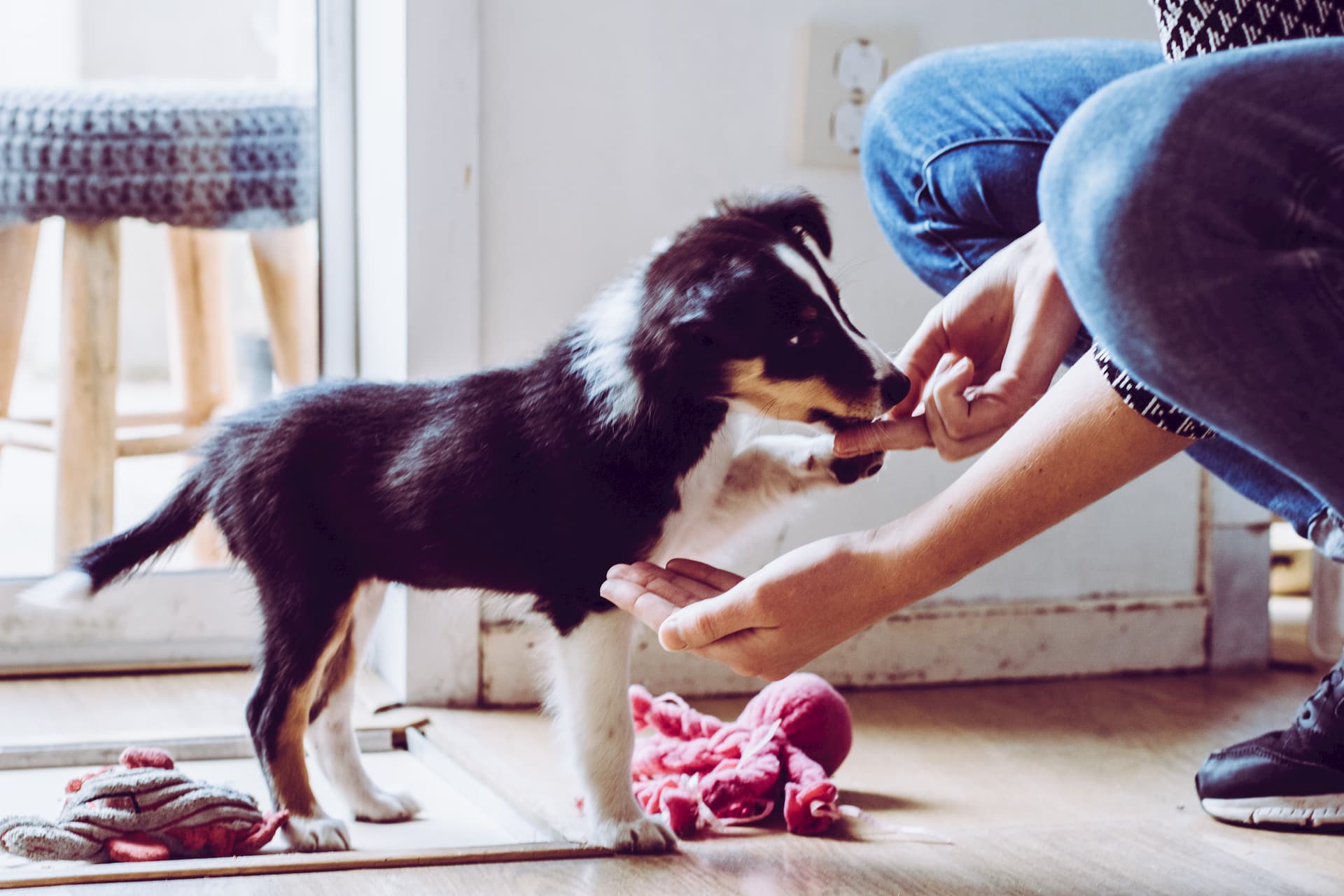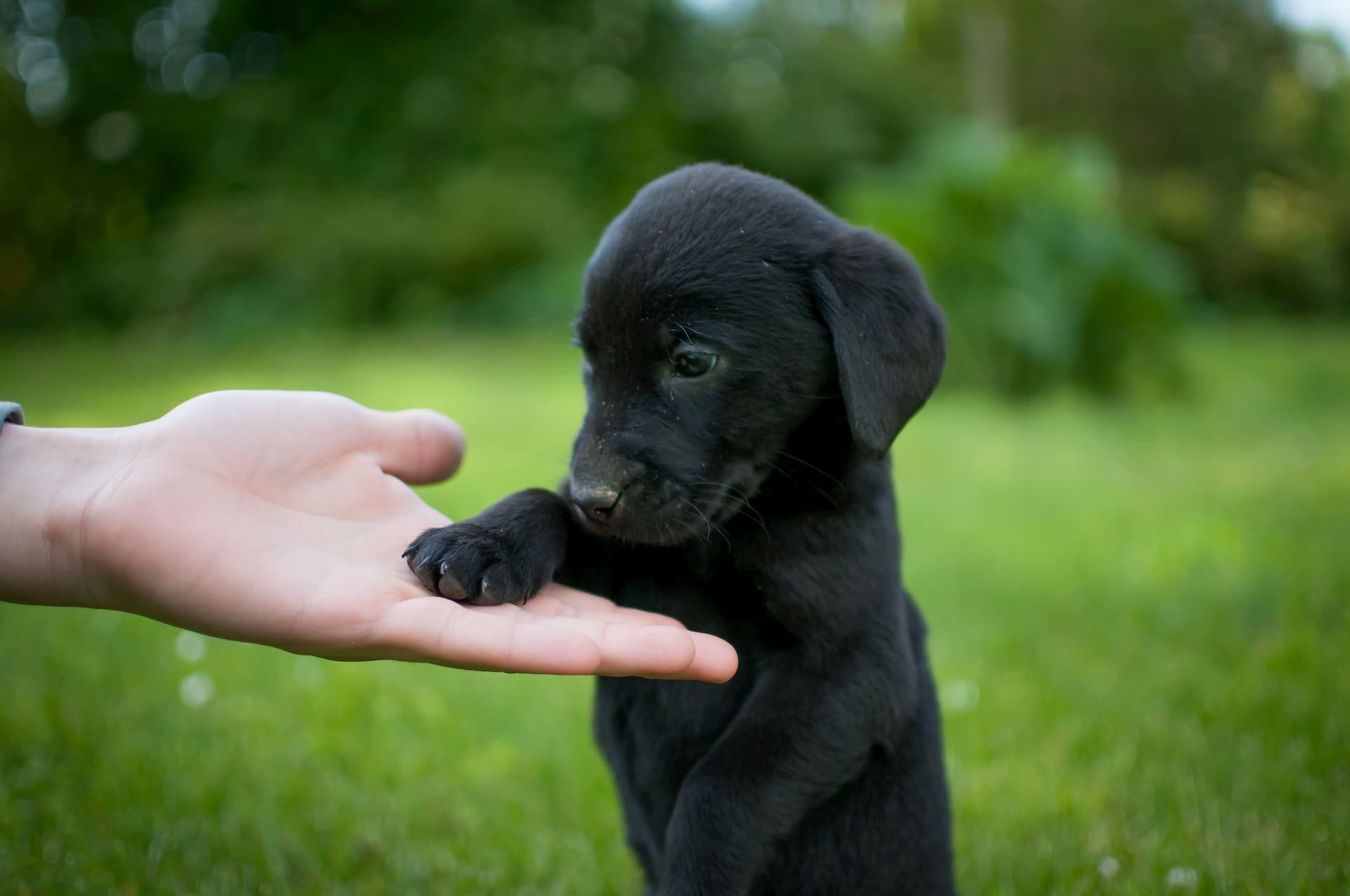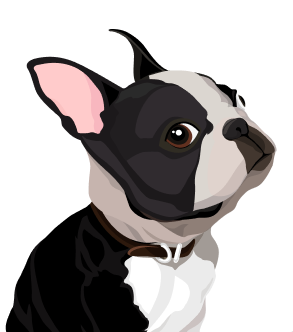Congratulations! Your dream is finally fulfilled and you’ve got a cute little puppy. When the initial excitement calms down, then an important question arises: how do you train a pup to be not only happy and cheerful, but also obedient?
At what age can I start training my new puppy?
This is one of the most frequently asked questions new puppy parents have. The answer to it is always the same: you should start training your puppy as soon as their tiny paws step inside your home. This is the moment when the process of raising and training your puppy starts.
However, there’s one other question which is actually much more important than “At what age can I start training my puppy?” This question is “How do I start training my puppy right?”
How do you start training a puppy right?
Puppy training includes practicing such important skills as:
- Responding to their name
- Accustoming them to a leash, a collar and a harness
- Accustoming them to hygiene procedures such as teeth brushing and nail clipping
- Loose leash walking
- The “Heel”, “Come”, “Sit”, “Down” and “Stay” commands
- Teaching the puppy not to pick things off the ground
Training starts the day you bring your new pup home. However, there should be no rush when you train your pup. Don’t start training all the skills and commands on the first day. Give your pup some time to get used to a new environment and explore their new home.
First of all, your new furry family member should eat, sleep and play. Playing is the best way to develop the puppy’s motivation, focus on the owner, and the ability to switch their attention. Even the whole training process can be turned into an interesting and fun game.

Puppy training is an ongoing process that requires one hundred percent of the owner’s involvement in the life of a new family member. In this stage, you should actively praise your pup for the correct behavior and celebrate their every single success, even a tiny one. If an unwanted behavior occurs, it’s generally best to ignore it, or you can correct your pup with a firm “no.” You can also try to switch the puppy’s attention to some other positive activity.
Should I punish my puppy when training them?
Some dog owners ask how to correctly punish their puppies for wrong behavior. Well, you shouldn’t punish your puppy at all. Instead, you should take a careful look at your actions and analyze how you provoked your puppy’s wrong actions.
Puppy training is based entirely on a core principle: “reinforce the correct behavior and do not reinforce the wrong one”.
What is considered to be the correct behavior? Any behavior apart from the bad one is considered to be correct. At any given time, ask yourself: “Is my dog doing anything wrong right now?”
If the answer is “Yes”, stop your dog immediately or switch their attention to a correct action. If the answer is “No”, reward your dog. Anything can be a reward, even a sincere smile and a kind word. Stick to this principle, and soon you will certainly get a more well-mannered and obedient puppy.
How should I arrange my pup’s daily training sessions?
It is important to provide your puppy with toys and games they need. It can be chew toys or games that allow the pup to run and bark.
Don’t overwhelm your puppy and always give them a rest. Play for 5 minutes, then give the puppy a toy and do not bother your pup for 10 minutes, then play with the puppy again.
As soon as you bring your puppy home, start training them with a soft collar. Leave the collar on your puppy for several hours. If the puppy tries to get rid of the collar very actively, put it on during games or feeding, so that the puppy can be distracted and get used to the collar.
How do I get started using food lure training?
Is your puppy in quarantine? Use it to your advantage! Learn how to play with your puppy enthusiastically and sincerely.
Use the toy to simulate prey and how it runs away. Normally, a hare doesn’t jump into the puppy’s mouth and it doesn’t fly through the air over the puppy’s head (don’t forget that jumps at an early age are dangerous and traumatic).

While playing, imitate hunting, that is, imitate a running hare with your hand. Teach your puppy to switch their attention from your hands and feet to playing with a toy.
Teach your puppy to love playing with you. Otherwise, when the puppy will be allowed to go out and meet other dogs, they may lose interest in you and it will be hard to get the puppy’s attention back.
Food rewards also work perfectly when training your puppy. How many times a day does your pup eat? 4 times? Great, that means that you can have 4 training sessions a day.
Stick to a regular training schedule starting on the day you bring your new pup home. Teach the puppy to “earn” food. Keep your training sessions short, a training session of 10-15 minutes is enough for young puppies.
What behavior should I reward my puppy for?
Another important thing is to learn what to reward your puppy for. The model is rather simple here.
Did your puppy come close to you? Perfect! Call them by their name and reward with a treat.
Did you step back a couple of paces and your puppy followed you? Perfect once again! Call your puppy by their name and reward with a treat. In this way you are teaching the puppy their name.
Did you sit on a sofa while your pup stayed on the floor? Reward them with a treat for keeping all four their paws on the ground. In this way you’re working to prevent your puppy’s unwanted jumping.
Did you put a harness or a leash on your pup while he walked calmly across the room in it? Reward your puppy with a tasty treat for that. This is how you start leash training your puppy.
How do you choose the right reward?
It is very important to choose the right rewards to form and develop the puppy’s motivation and make them love the training process. So how do you reward your puppy during training?
When training your puppy, the choice of reward depends on what stage of learning you are in and on the pup’s preferences.
Remember a universal rule: when teaching your puppy something new, reward them with a treat and when consolidating a skill — with a toy or a play. However, pay attention to what your puppy wants at this very particular moment.
You can use the following rewards when training your puppy:
- Treats. This is the most popular and effective kind of reward. However, it is very important to choose a treat that the puppy values and is willing to work for. A good high-value treat will catch your pup’s interest and keep them focused.
- A toy. It is very important that the toy that you use as a reward when training your puppy is loved by them, but at the same time it is given ONLY during the training sessions. Your pup should “earn” this toy.
- Playing. Playing with the beloved owner is much more enjoyable than playing simply with a toy. Choose toys that enable you to play together — for example, not just a ball, but a ball with a rope that you can hold, or special tug toys.
- Verbal praise (a social motivation) and petting. Keep in mind that social motivation has to be developed. That is, in the initial stages of training, your verbal praise and petting are not so valuable to your dog.
You can also combine or alternate rewards so that the puppy does not always know what they are going to get next time. This will increase your puppy’s motivation and strengthen their bond with you.
